It’s been a grueling game and it’s down to this. It’s your king and bishop versus your opponent’s king and rook. Is rook vs bishop endgame a draw?
Is Rook vs Bishop Endgame a Draw?
More often than not, rook vs bishop endgame ends in a draw. The king who has his bishop should run to the corner that is opposite color of his bishop as a safe haven. However, traps can be set to create checkmate.
Understanding a pawnless endgame strategy is just as important as understanding positional advantage and controlling the center.
Technically, an endgame with rook vs bishop should end in a draw if the side with the bishop knows what to do. However, if a crucial mistake is made then there are several tricks and traps that can occur which could allow for the side with the rook to steal the win.
Now, you may be thinking, what if the white king and white rook are on opposite ends of the board and the bishop forks them, placing the king in check while also threatening the rook.
Well if this were to happen, the rook would, of course, be captured. Can the king and his bishop now put the lone king in checkmate?
No. The game would end in a draw because it is IMPOSSIBLE for king with his bishop to place the lone king in checkmate.
So, let’s take a look at the strategy that MUST be put in place for the side with the bishop if they want to escape without a loss.
Escaping to the Corner of Opposite Color from Your Bishop
If you’re the side with the bishop and you find yourself in this endgame, first and foremost you need to RUN!
And the direction where you run to is important here, so pay attention.
To ensure the draw, run to the corner that is the opposite color of your bishop. This means if your bishop is occupying a light colored square, then you want your king to run to one of the 2 dark colored corner squares.
Similarly, if your bishop is occupying a dark colored square, then you want your king to run to one of the 2 light colored corner squares.
Why does this strategy work and create an inevitable draw?
Let’s take a look.
In the example below, the black king has successfully run to the correct corner and is now in check. (Notice the black king is in the dark colored corner while his bishop occupies a light colored square, this is important!)
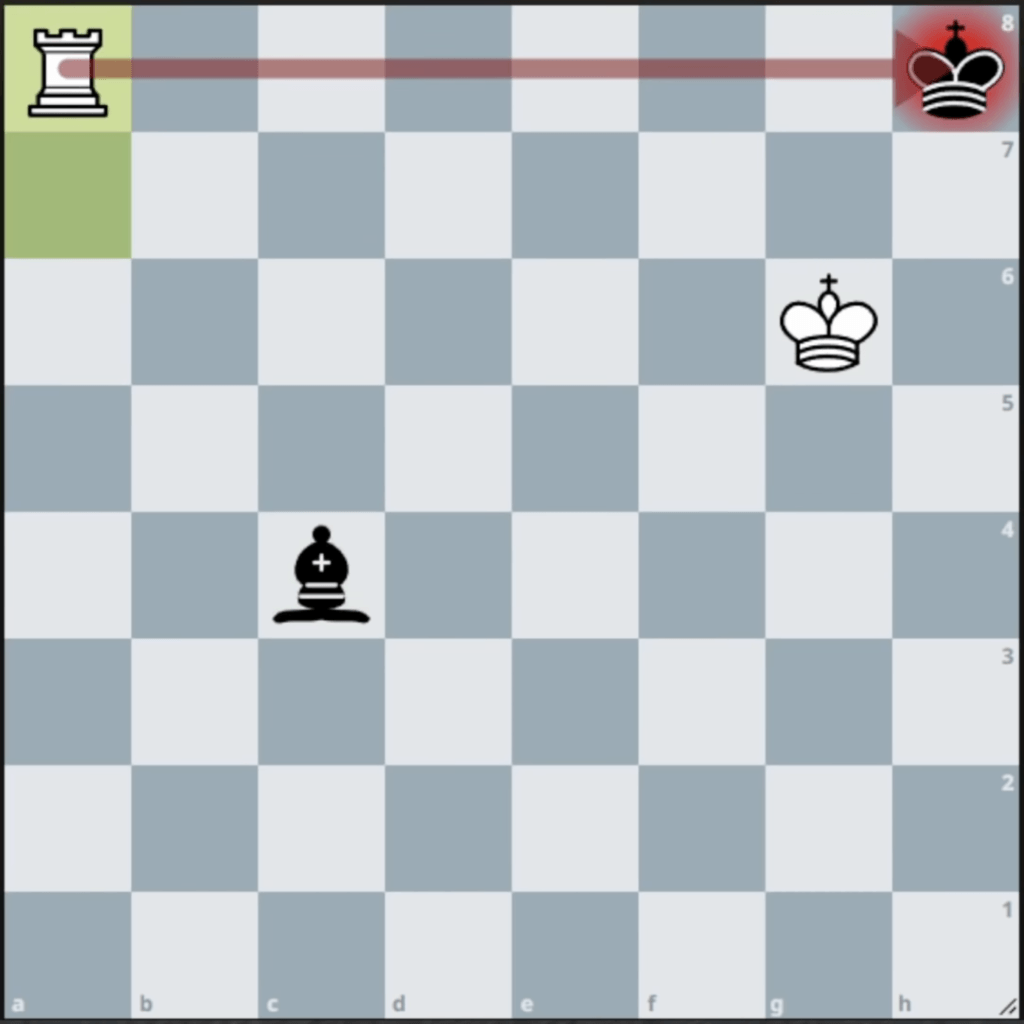
Because of the position of the white king, the only move black has is to block with the bishop at g8.
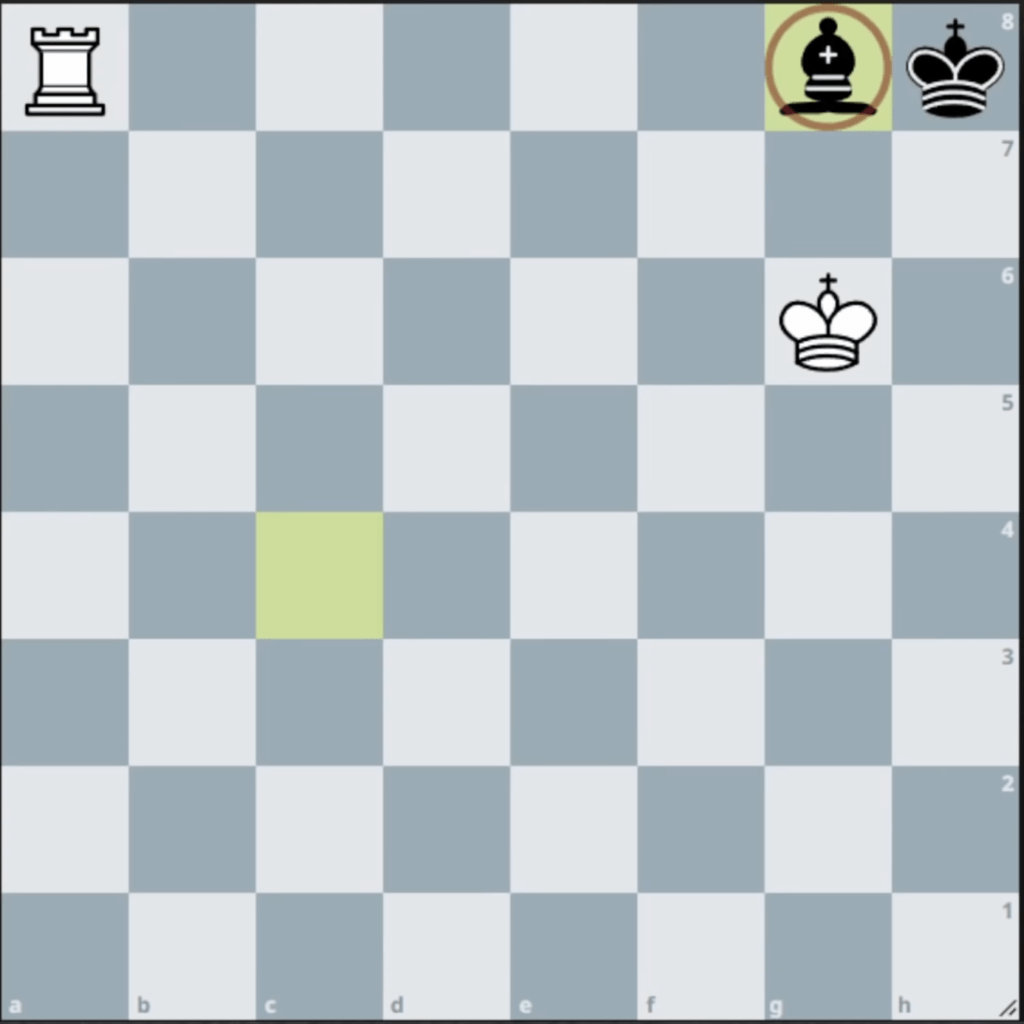
From this position, no matter how white tries to attack the king is protected by his bishop.
Note that if the white king moves one square to the right to h6 the game ends in a stalemate because black would have no legal moves.
Black’s bishop would not be able to move away because this would place the black king in check.
The black king would not be able to move to any of the adjacent squares because of the position of the white king.
Remember, a stalemate is not a win for the side with more pieces! It is a draw!
A Trap that can Be Set by the Rook
As we mentioned at the top, an endgame with rook vs bishop should end in a draw if played correctly.
However, if you’re on the side with the rook and your opponent has played correctly moving his king to the opposite colored square of his bishop, there are some traps you can set to potentially create checkmate.
From the position in the image above, instead of white moving the king to h6 causing a stalemate, let’s take a look at what happens if he moves the rook down to a7.

Now, black has several moves they can make with their bishop.
Obviously they can’t move the bishop to f7, h7, or a2 because it would be immediately captured.
But what about the other 4 options pictured below? If black moves the bishop to any of these 3 spots circled in green, they’re totally fine.
If they were to move to e6, however, they’ve bit on the trap, and I’ll show you why.
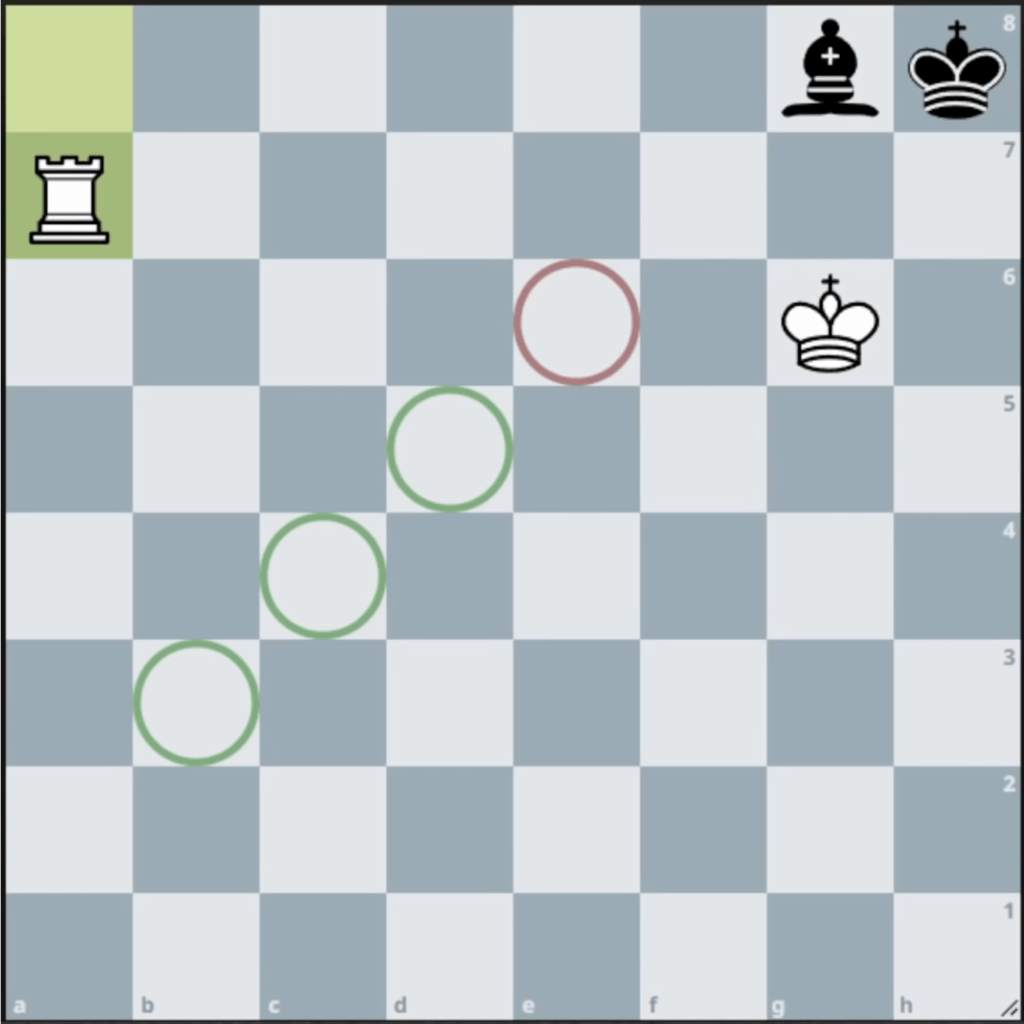
Once they move their bishop to e6, you can now place your rook at h7 placing their king in check.
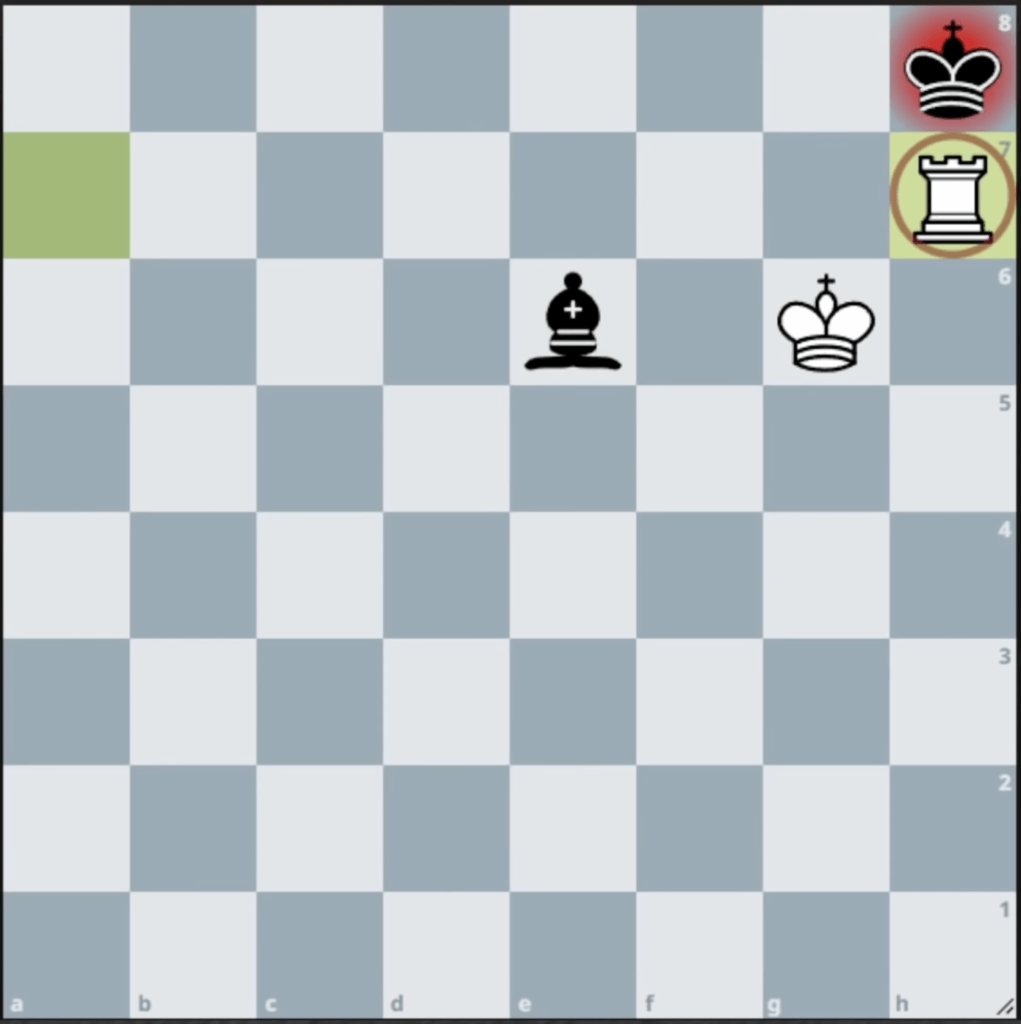
Black will then move king to g8 and you can move your rook e7 threatening their bishop as shown below.
From this position black is in major trouble. If they decide to move their bishop away from the attack, rook can simply move up to e8 for checkmate. If they move the bishop to f7, it is quickly captured as well.
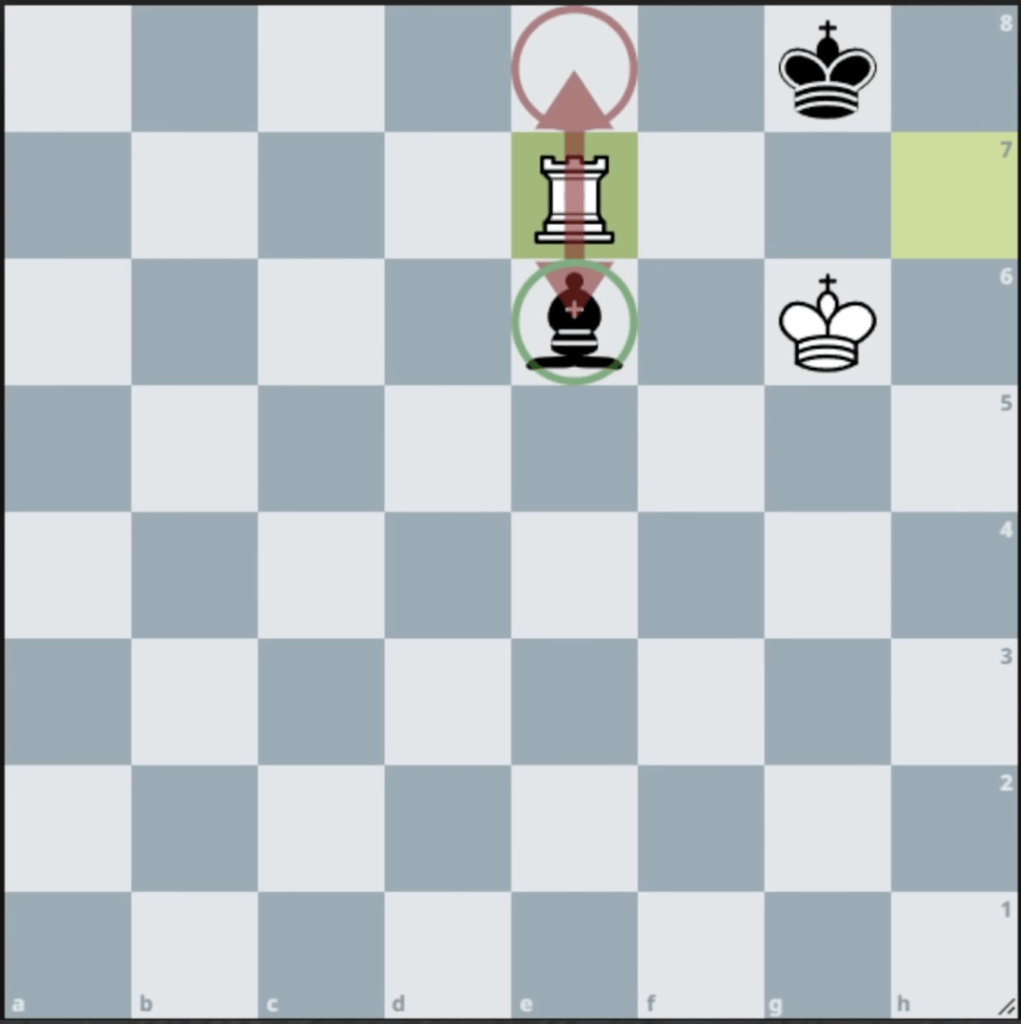
Definitely watch the video as it covers this trap in great detail along with more that you can utilize if you find yourself in this endgame.
Final Thoughts
If the king with the bishop runs to the corner that is the opposite color of his bishop the game should end in a draw. However, there are some traps the side with the rook can set to cause checkmate.
What do you think? Have you found yourself in this endgame before? Have you been endlessly running as the side with the bishop, not knowing where safe haven was? Have you been on the side with the rook and made a misstep to lose your advantage? Let me know what you think in the comments section below!

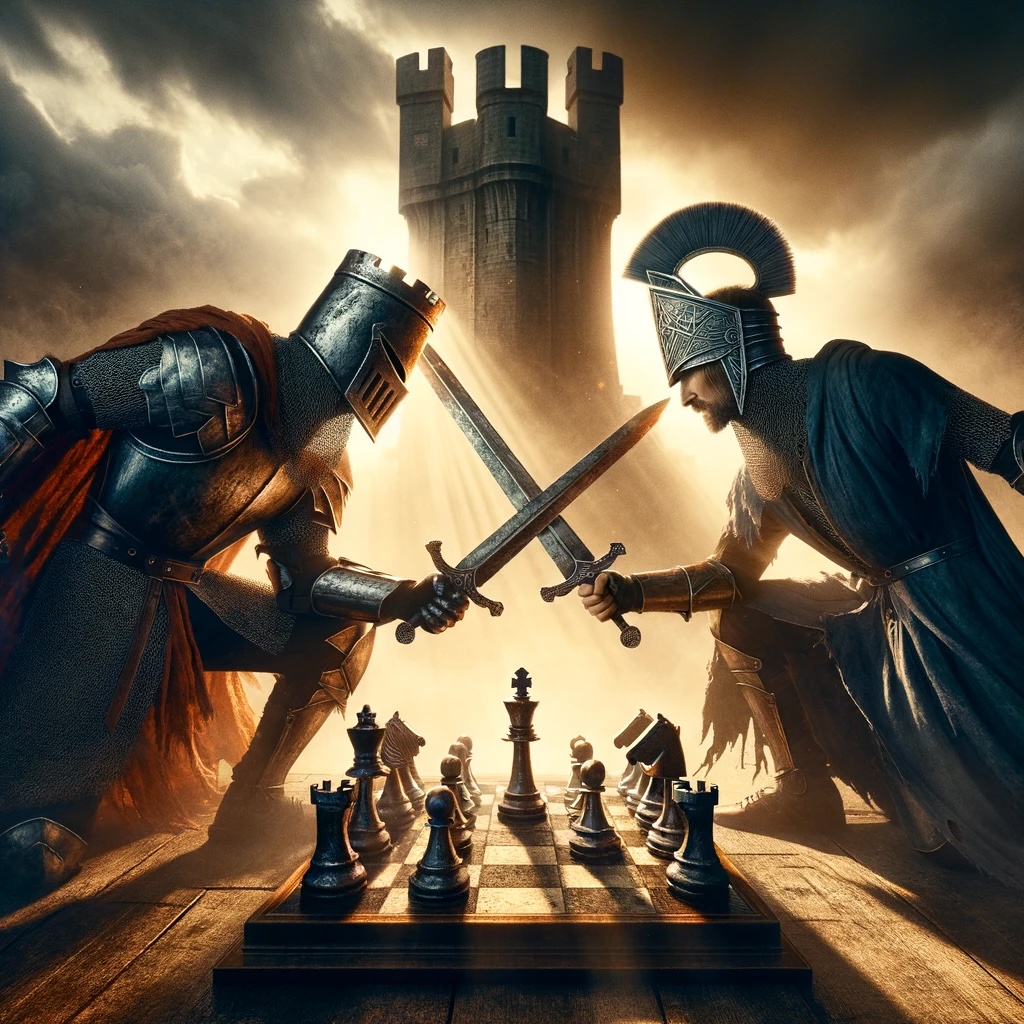

Excellent deep-dive into this endgame scenario. I’ve never experienced it myself but it’s always helpful to have a strategy like this up my sleeve if I end up with only bishop left. Good to know that you can evade any traps by working around these easy mistakes! I can totally see somebody thinking it’s game over in a complex scenario like this, and make a simple mistake that costs them the game.
You’re absolutely right! The more I publish these articles the more I recognize those areas in the game 🙂 Thanks for the comment!
As per some of your other articles, I think I’m learning more about chess every time I view your posts.
I particularily like this post because I feel I’ve been involved in one of these endgame moves and it dragged on forever.
I do see where my mistakes were at the time, and now appreciate where I can avoid the wrong corners again.
Thanks.
That’s what it’s all about! Thanks for the comment!
I have a few questions: in the situation where the white king and rook are on opposite ends of the board and the bishop forks them, would it be a draw if the bishop forks the king and rook but doesn’t put the king in check? Also, in the trap that can be set by the rook, if the bishop moves to one of the three spots circled in green, what is the best course of action for the side with the bishop to ensure a draw? Thanks for sharing this information!
To fork the rook and king by definition means putting the king in check. Once the rook is captured it would be an instant draw because a king and a bishop can’t put the opposing king in checkmate. And in the example shown, if the bishop moves to a safe square everything’s fine. It’s just a matter of continually doing that in response to the rook’s moves. Thanks for the questions!
I really like this end game tactic. Especially with moving Rook to E7 after King moves to G8. That’s a really great surprise attack. I love doing this type of surprise attack especially if I can capture their queen with that move, it’s always satisfying.
like if my Rook is on d1 and my bishop’s on d3. Opponents King is on e8, and his queen on d8. bishop to g6 check, King moves somewhere and Rook captures Queen on d8. Thanks for sharing! Will come back again to your site for more chess tactics and strategies!
I appreciate it! Thanks for the comment!
Great content and I like the visuals you have added. Very informative, especially to a novice like me. When I was younger, my cousin and I would play and get into similar situations. We just keep playing for hours, trying to get the better of the other. We had no idea we would usually end up in a draw. Now I can go play him again and use so better strategy to avoid this situation, and take him down!
haha there you go! Thanks for the comment!
This is a useful endgame tip because it is not such an uncommon situation to find yourself in.
By the way, I noticed a typo here:”Once they move their bishop to e6, you can now place your bishop at h7 placing their king in check.” Of course, that should be “their bishop… your rook…”
Thanks for that! I’ll fix it right now 🙂
Very interesting article! The graphics are so helpful. I’m still learning chess, and how the rook and bishop can be such powerful weapons. Do you have one piece in particular that you try to preserve through the game? I know obviously not pawns, but I wasn’t sure if you just let the game flow, or if you have a go-to weapon that you try to keep alive for a later attack?
You obviously want to keep your more valuable pieces as long as you can… your queen and rooks, then bishops and knights..